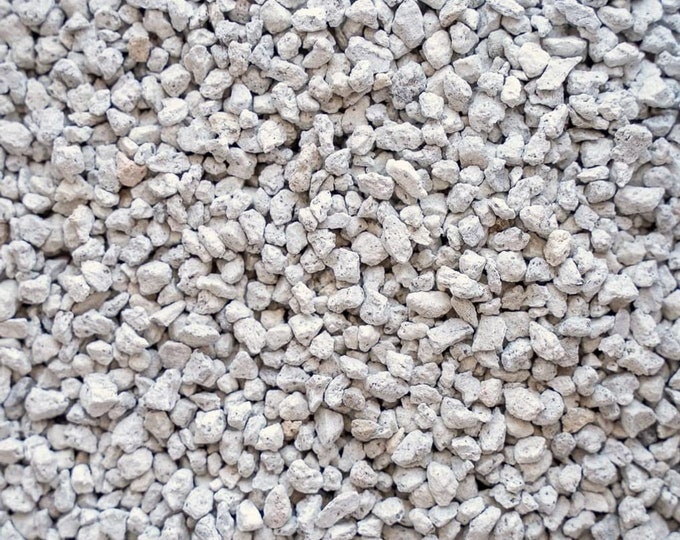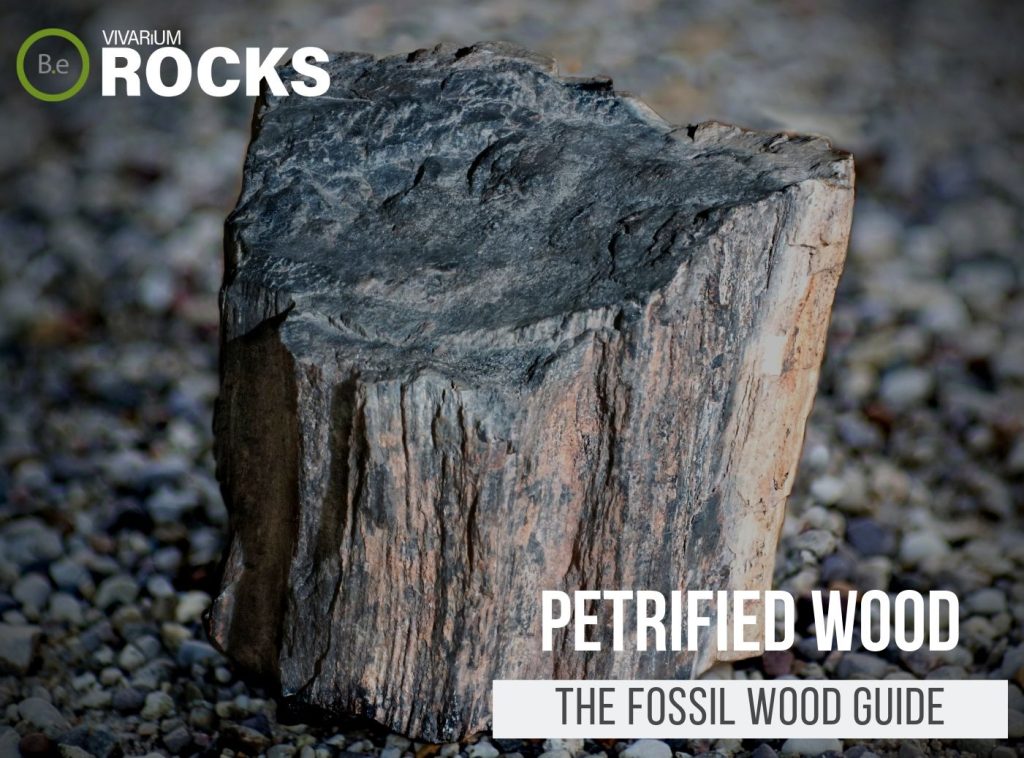You know that fizzy layer at the top of a two-liter soda bottle when shaking it up right before opening it?
That’s kind of what Pumice is to cool Lava Rock.
This stone has a multitude of uses in many industries but few may know its potential benefit to an ecosystem when used in a vivarium.
This article will cover the many uses of Pumice Rock and hopefully, provide insight into its utilization as a vivarium rock.
| Quick Stats: | |
|---|---|
| Traditional Name | Pumice |
| Common Names | Floating Stone, Pumicite |
| Origin | Lava Flow, Igneous Dike |
| Habitat | Islands, Ocean, Volcano Fields |
| Color | Gray, White |
| Density (g/cm3) | 2.31g |
| Hardness | 6 |
| PH Impact | Neutral (No Effect) |
| Elemental Type | Extrusive Igneous Rock (Mafic) |
Table Of Contents:
ToggleWhat Is Pumice Rock?
Pumice is an extrusive igneous rock that forms from cooled magma.
Much like other types of Lava Rock (Scoria, Basalt), its conception happens whenever there is a volcanic eruption.
Pumice Rock differs in the fact that it is extremely light in weight as well as color.
It is also the most vesicular in comparison to other types of Lava Rocks.


Pumice Rock Facts
Pumice Rock is technically a form of volcanic glass and has more in common with Obsidian than Scoria despite the similarities.
If you looked at this rock under a microscope you’d notice that the texture is very much transparent.
Pumice is often referred to as the Floating Stone because of its extremely light density and causing it to float on water.
When the stone is crushed into dust or powder, it is referred to as Pumicite.
Description
Pumice is a light-colored heavily vesicular stone.
Its comprised of thin bubble-like walls of volcanic glass and its light color is a contribution of the collective bits of bubble all clumped together.
Essentially, it looks like a white or light gray colored Lava Rock closely resembling Scoria.
Many often confuse the two and it’s common to see one sold as the other in the market.
The easiest way to tell the difference between the two is Pumice floats and Scoria sinks when both are placed in water.
Pumice Rock has a density of 2.31 grams per centimeter cubed making it half the weight of water in volume.
If you are unable to hold the rock in person or view it online and it’s black, dark gray, or red…
It’s more than likely Scoria Rock!
Pumice Rock is mostly composed of porous vesicles because of trapped gas bubbles.
The majority of rising gases from the bottom of cooling magma get held in this outermost layer.
The final outcome is this riddled rock that is rich in trapped oxygen making it a great substrate additive in terrariums.
I will go more in-depth about this in the “vivarium preference” section.
Habitat
Like all extrusive igneous rocks, Pumice is often found near active volcano sites.
Islands like Pompeii, for instance, were completely covered in this particular type of Lava Rock.
The biggest contribution of Pumice is often formed from volcanic activity under the oceanic crust.
Massive amounts of the light-colored volcanic rock are released into the ocean causing it to form a sort of floating island commonly referred to as a Pumice Raft.
Environmental Influence
Pumice is an inert rock that doesn’t have an impact on water parameters.
This makes it a good choice for all types of aquariums because it will not cause the PH to go up or down.
Furthermore, it won’t have an influence on the water hardness either.
Vivarium plants that require aerated substrates can benefit from Pumice Rocks in their gravel form.
The vesicular pockets within this rock allow it to retain larger amounts of water and air than the soil can hold on its own.
Furthermore, Pumice won’t compact over time the way soil does, keeping roots from suffocating and rotting out.
Vivarium Preference
Pumice Rock has a unique feature in its ability to float above water for a period of time.
The inevitable fact about that is at some point the stone will eventually become waterlogged.
This makes for an interesting challenge when attempting to utilize Pumice as a hardscape.
If you put it in an aquarium, it will float at first for a period of time and eventually sink.
I’d personally recommend using this rock in terrariums and paludariums as a form of substrate and/or soil additive.
Pumice gravel can also be used as filter media due to its high surface space for bacteria to settle.
Mix it according to your own preference.
Make sure to clean the rock to assure no unwanted dust leeches into the enclosure.
Advantages
Being an inert stone is always a big advantage with extrusive igneous rocks.
This Floating Rock has the most amount of vesicularity, making it able to stock more bacteria than other forms of lava rocks.
Apart from that, Pumice can retain large amounts of water per volume making it sufficient for moisture-dependent plants and animals.
Soil aeration is also another great aspect of Pumice not many vivarium rocks can match.
Disadvantages
On the contrary, being lighter than water can come at a cost too.
If your intentions are to hardscape with Pumice Rock, there’s no telling how long it could take to waterlog it.
Even after finally getting it to sink, there’s no guarantee it will remain in place the way more dense stones comfortably anchor.
Many also find Pumice peppered into the substrate unsightly and it can present a major risk to inhabitants that mistakenly swallow the rocks.
Buy Pumice Rock
Pumice Rock is an extremely popular stone to buy and can easily be found locally.
Always inspect newly acquired stones for potential pests and toxic minerals before placing them in an established tank.
Click the image below to find out more about the current price and other relative info:


Pumice Rock Recommendations
Here are a few more useful tips when working with Pumice Rock for the first time.
Inspect the stones to see confirm the intended type of Lava Rock has been acquired.
Based on the color as well as the sturdiness of the stone, you should be able to identify possible unwanted minerals hitchhiking along with the supply.
Before placing any type of Lava Rock in an acidic vivarium, always do a quick alkaline test to assure there are no possibly toxic minerals contained within the rock.
As usual, clean the Pumice Rock to remove access dust or loose particles from the surface.
Cleaning Pumice Rock
In most cases, newly acquired Pumice will need slight preparation before going into a vivarium.
This will matter more for all types of enclosures including both aquariums as well as terrariums.
Begin by placing stones in a bucket of cold water.
Rinse the stone thoroughly in another bucket.
Repeat this process until you are able to place stones in a clean bucket of water and observe no noticeable change in color or dust.
Breaking Pumice Rock
With a hardness score of 6, Pumice can be a bit more difficult to strategically break than most other aquarium rocks.
This type of rock should be used more in small gravel-size portions or powder.
Crush the stone with a hammer and cloth to assure small fragments don’t go airborne.
If that proves to be challenging, you could always get pumice soil.
In an attempt to carve Pumice into the desired shape, a chisel and hammer kit will more than likely be required to break the stone accurately.
This rock breaks into fracture-type pieces so don’t worry about trying to get the perfect shape.
If an attempt to chisel out cave formations or arches causes the stone to split into undesired parts, simply superglue the rock back together.
Sprinkle specs or loose basalt dust over the newly glued seams to cover unnatural separation.
Rocks Similar To Pumice Rock
When designing a new enclosure for the first time, it would be best to stick with one type of stone to use as a hardscape.
Furthermore, this type of rock can be hard to come by depending on where you are located in the world.
If for any reason, you find Pumice difficult to acquire, or simply want to consider something different…
There are a wide variety of stones to consider.
Here are some other types of stones one might find are worth taking a look at in the place of Pumice Rocks:
Conclusion
Pumice Rocks are very interesting stones to consider in a vivarium.
They have a number of useful ways they can benefit the enclosure and present a unique opportunity to showcase floating rocks… Even if it is temporary!
Lava Rocks, in general, are extremely popular in the aquarium hobby.
If you are discovering this particular kind of vivarium rock for the first time, would you consider using it?



